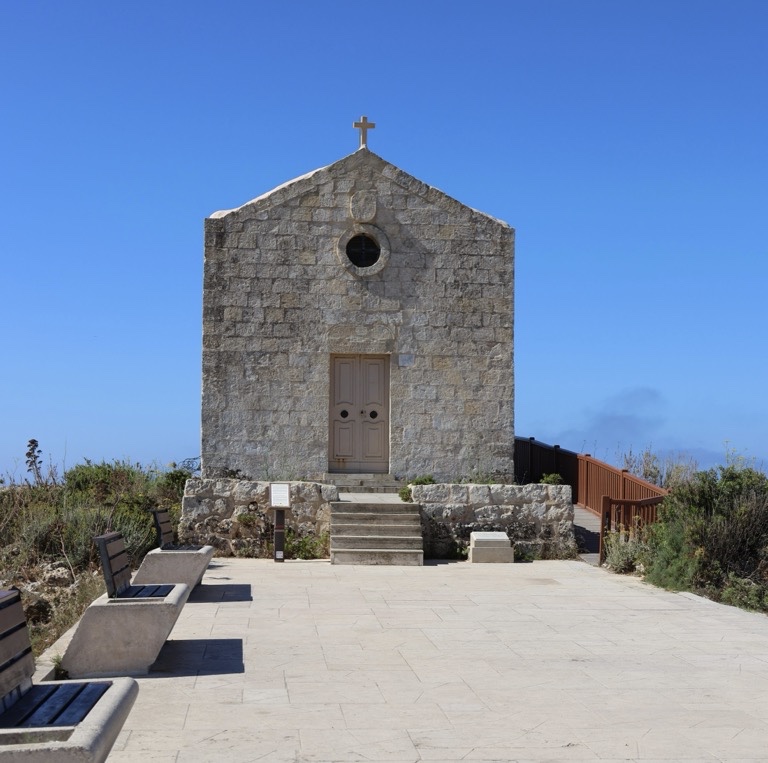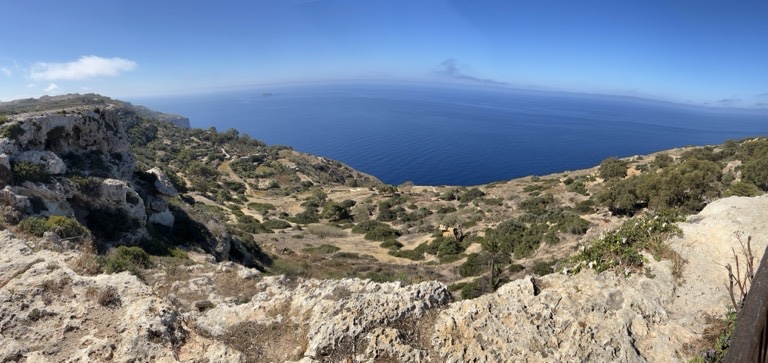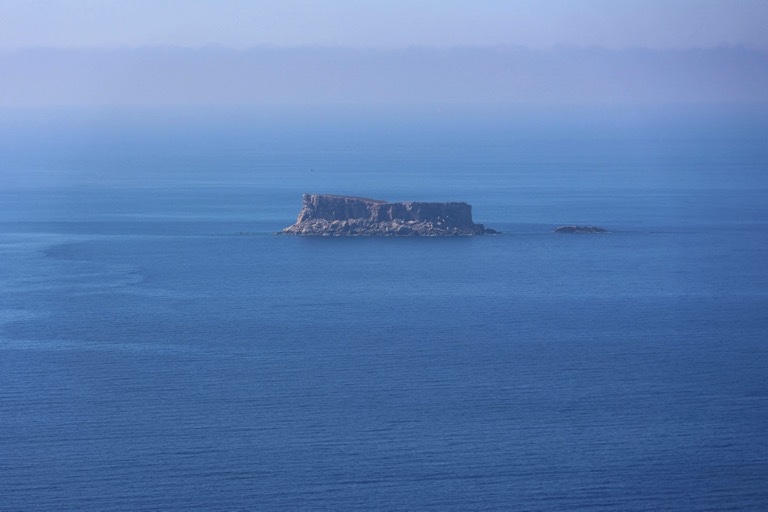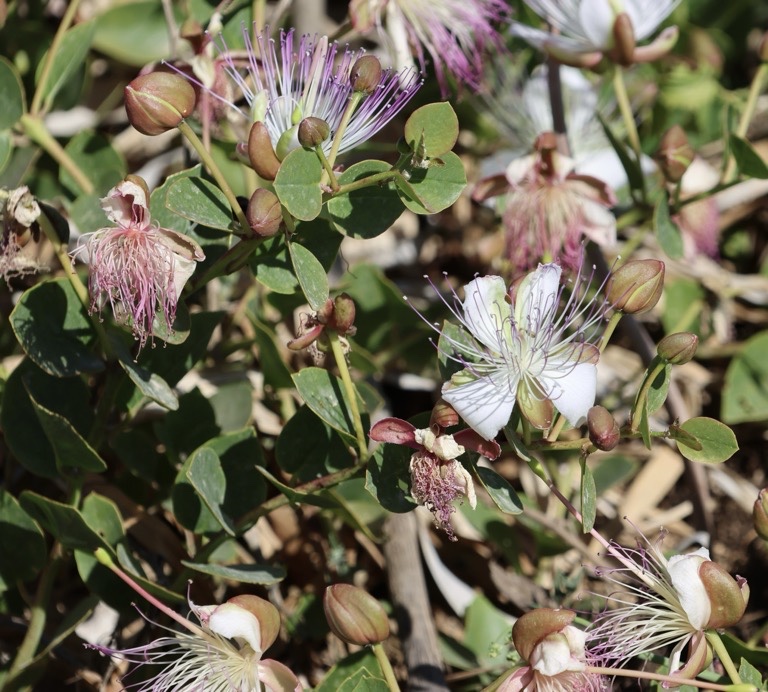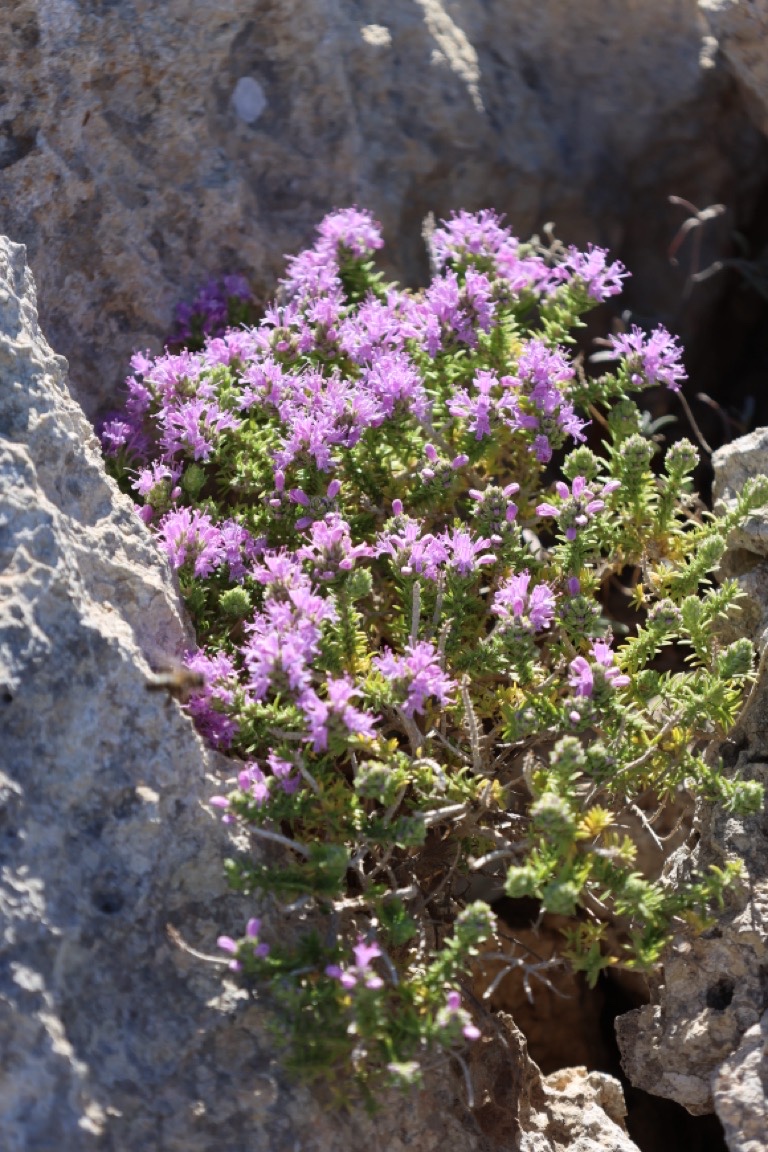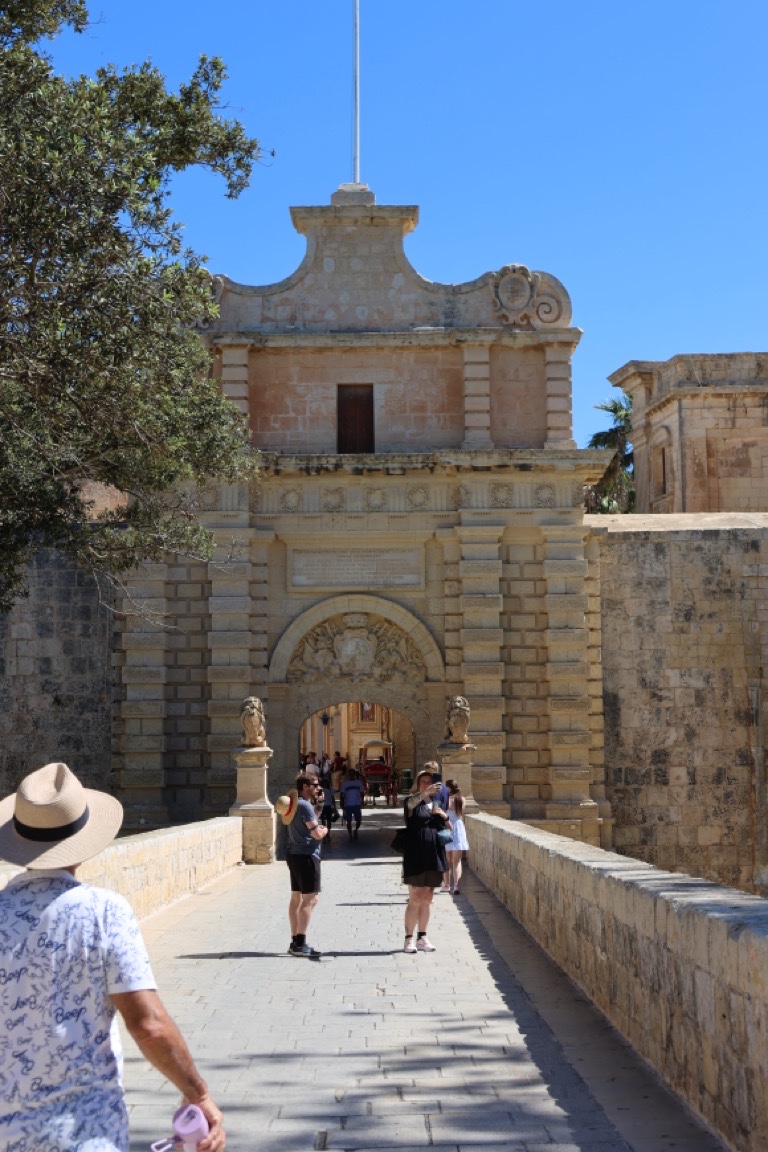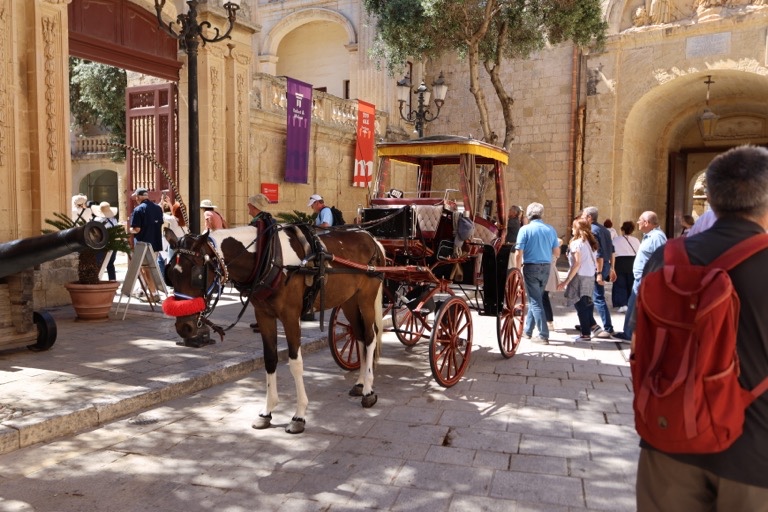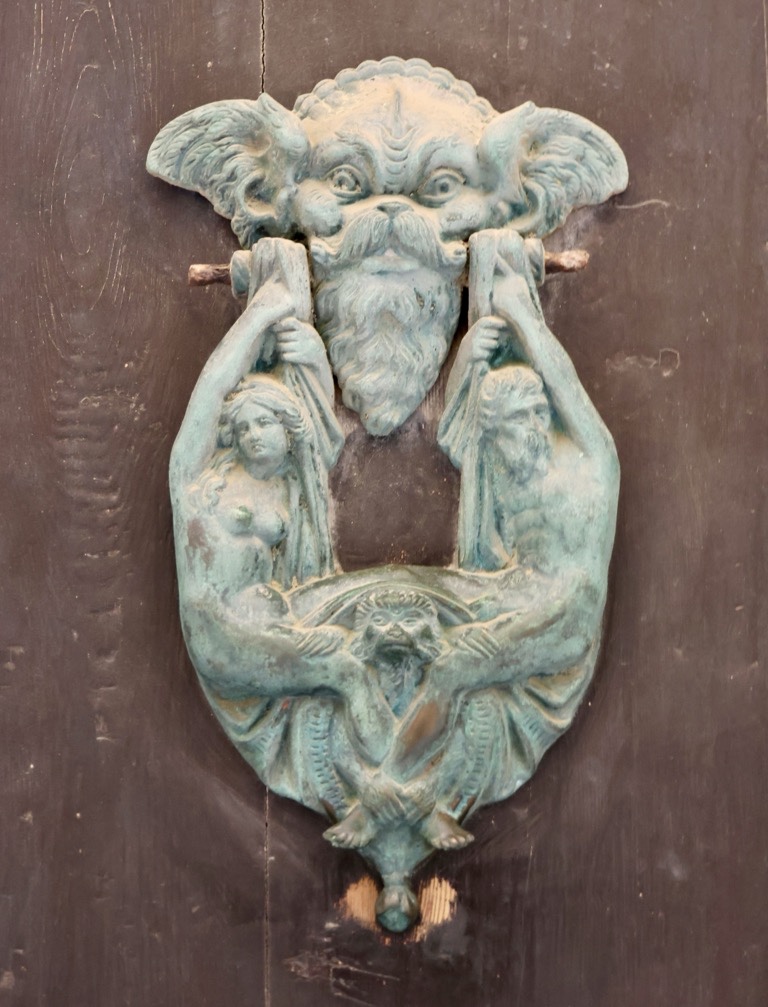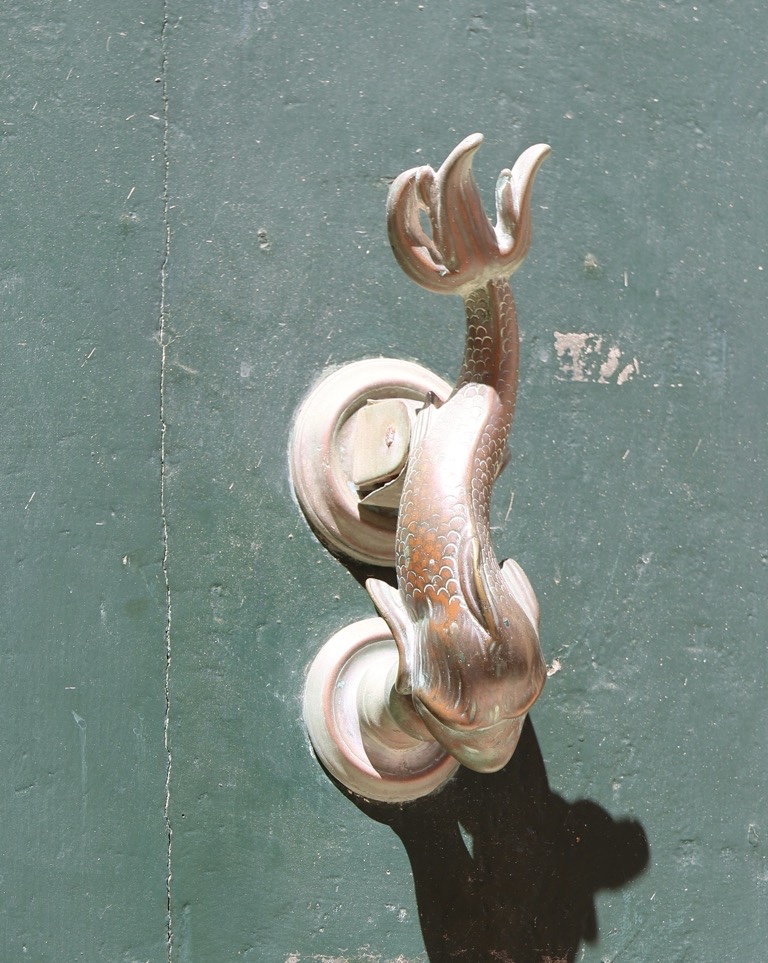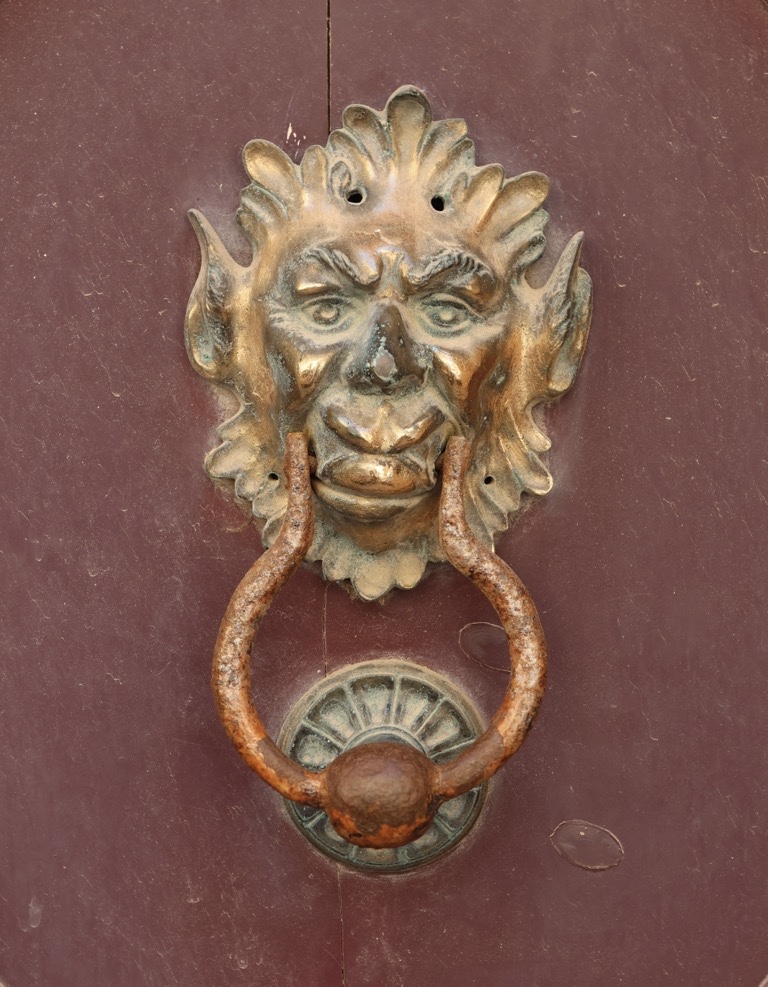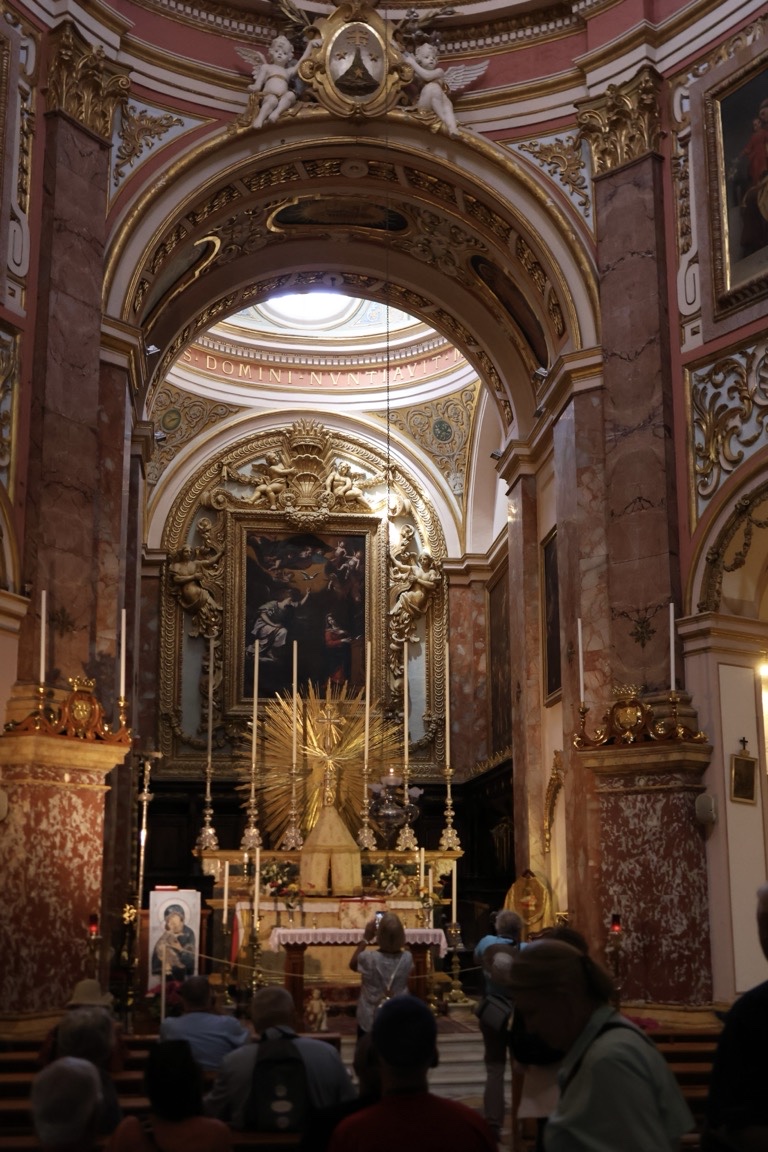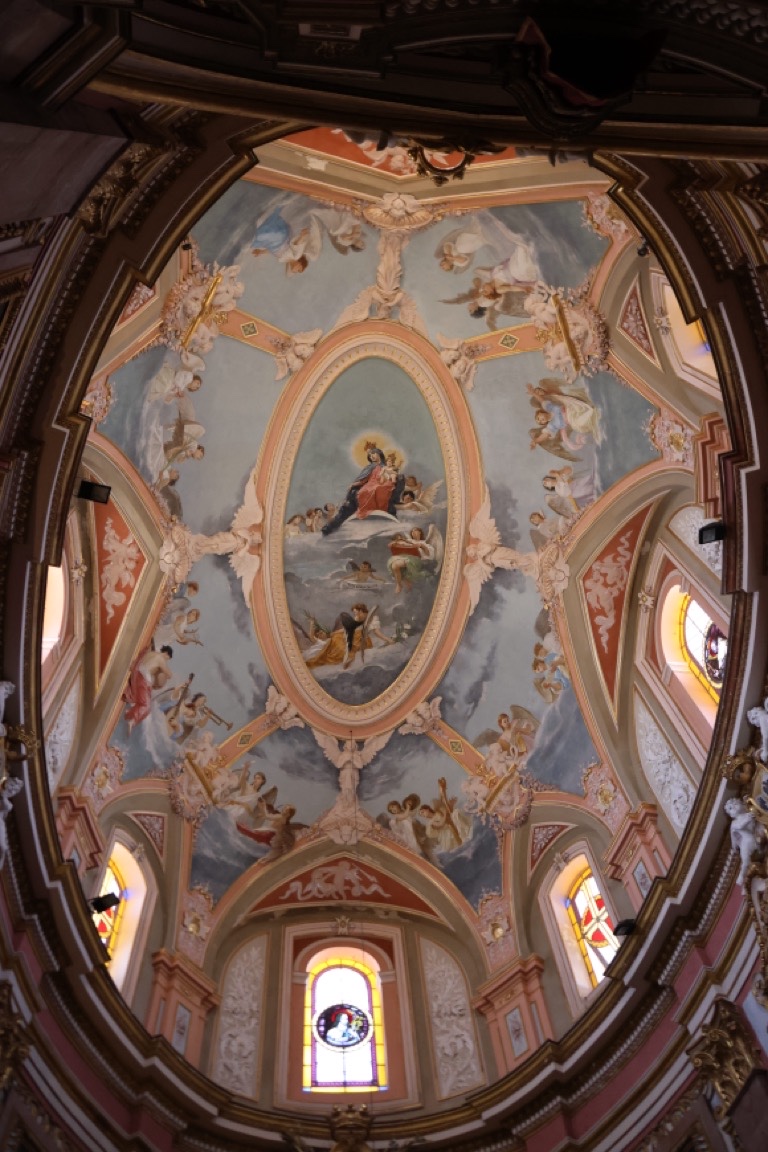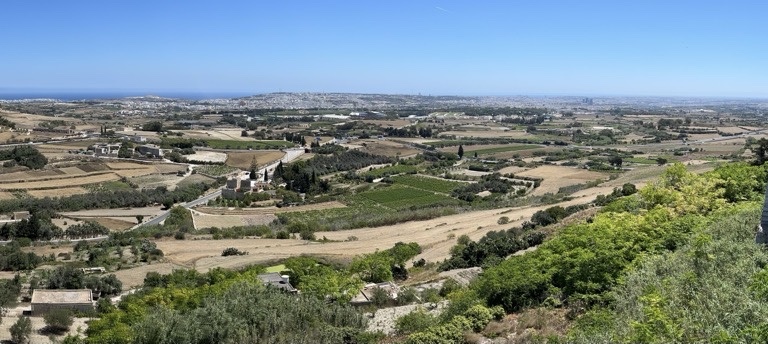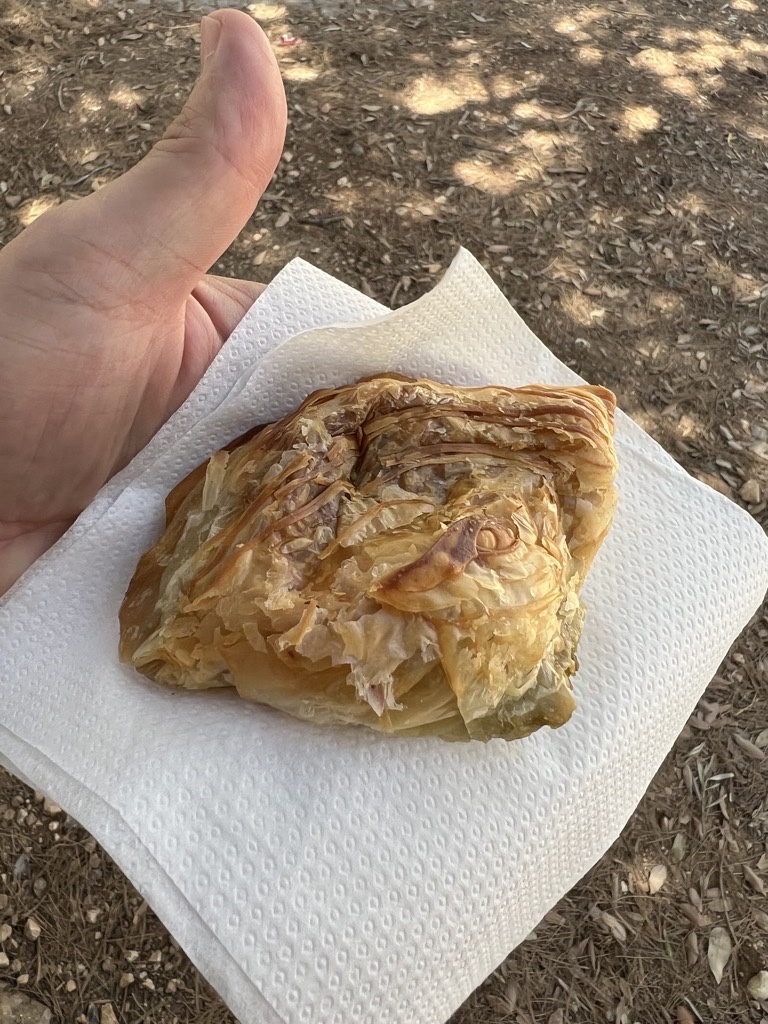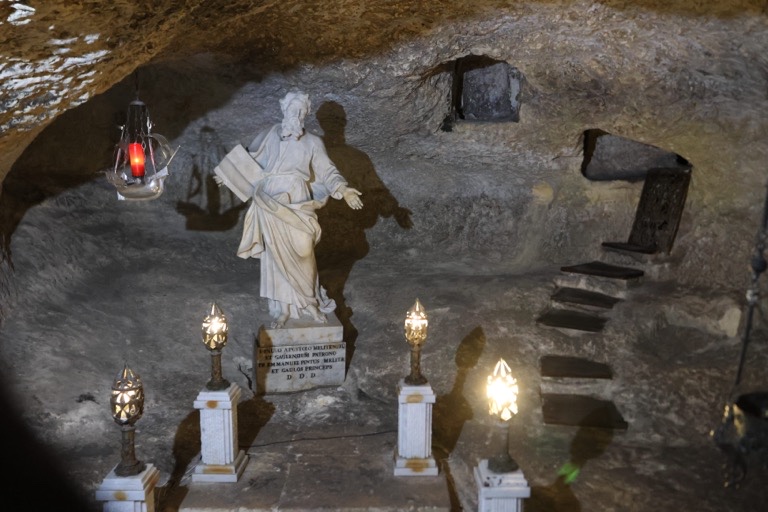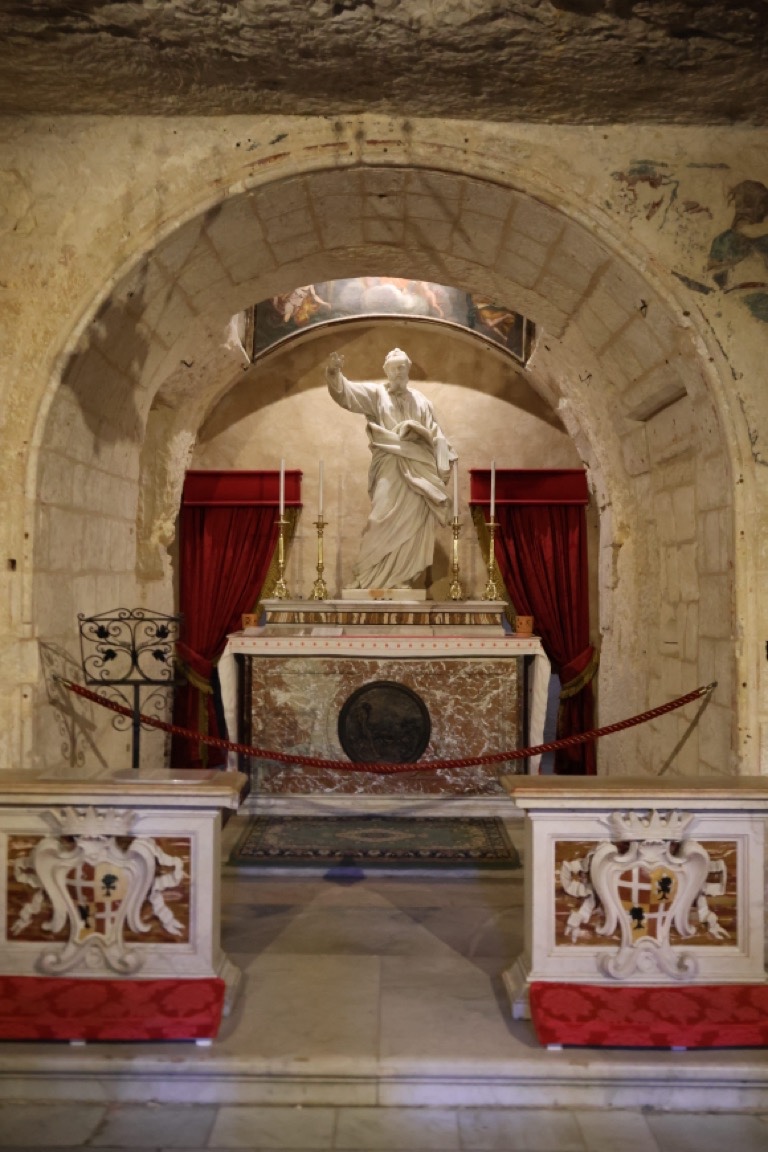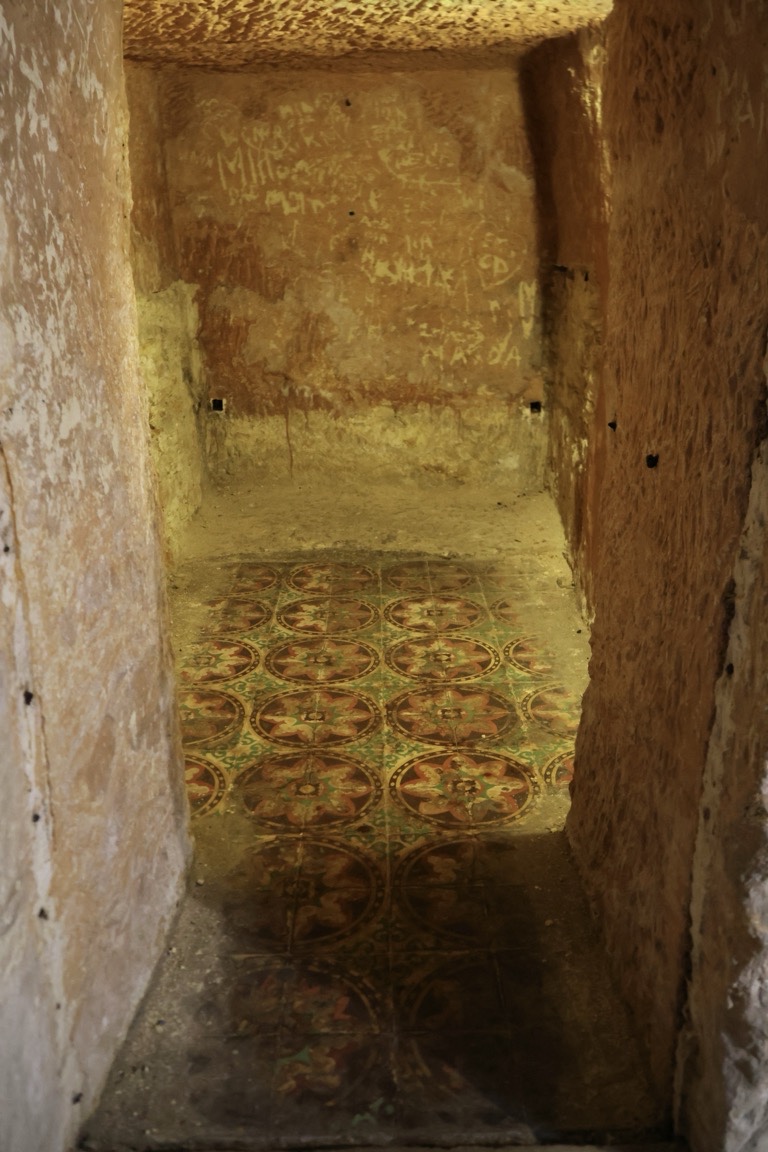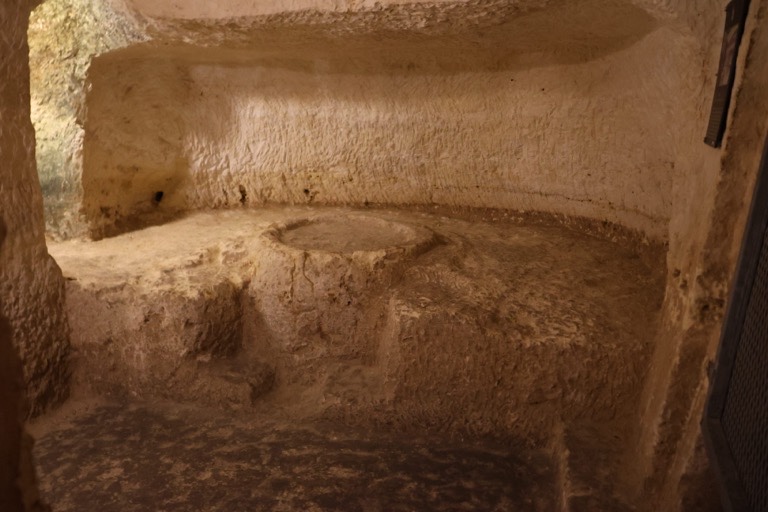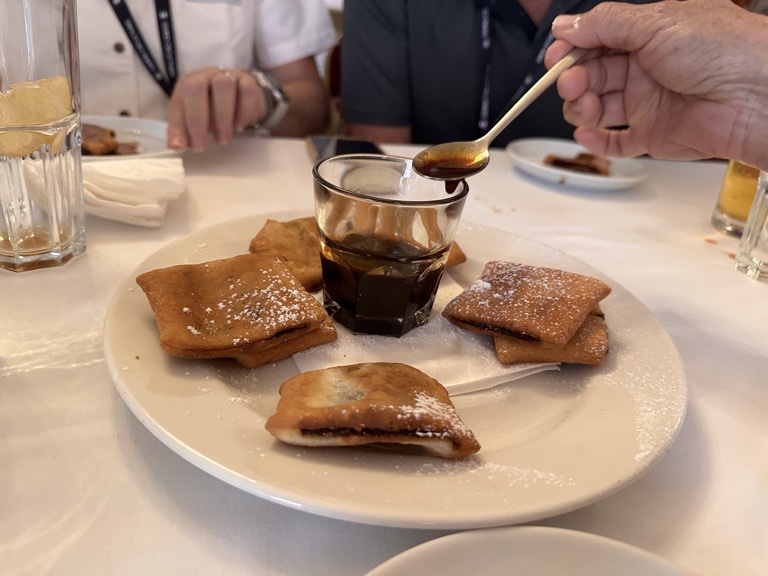on
Mdina
We left at 9 am for our first stop at the Dingli Cliffs.
Our local guide, Daniella, talked about several topics while we were driving. There is something called Traditional Maltese Coffee or Kafe Msajjar. It’s a dark roast with cloves, anise and chickory in it. Sometimes Sambuca is added.
Child care is free for the first 30 hours/week. It’s subsidized per hour after that. School is free, but you need to pay for uniforms and extra-curricular activities. University is also free.
There is a free health care system, but also a private health care available to get in earlier. Private options are reasonable, 15€ for a cold, or 30€ for blood tests.
Every village has at least two patron saints which makes for a number of feasts.
We stopped at the St. Mary Magdalene chapel to look out over the cliffs.
The island of Filfla is visible off to the left.
There were a couple wildflowers growing in the area. The first was capers, as you would eat on your salad.
Next we drove to Mdina.
You need to be aware of the horse-drawn coaches as they go throughout the city. Listen for the bell they ring when they come up behind you.
Walking along the streets, the door knockers drew our attention. This was a way to display wealth, we can spend money on something purely decorative.
We walked around St. Paul’s Cathedral, but did not go in.
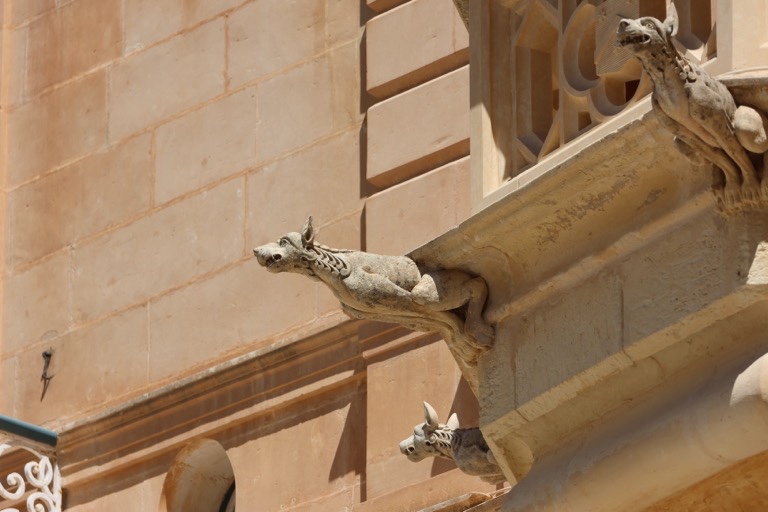
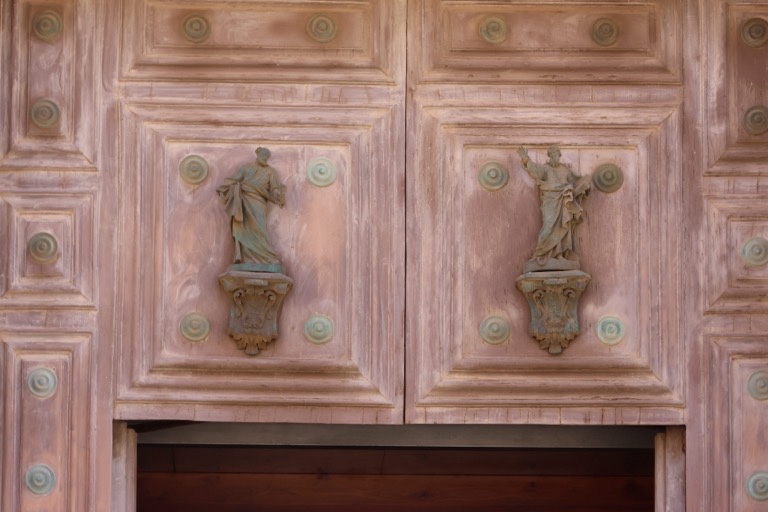
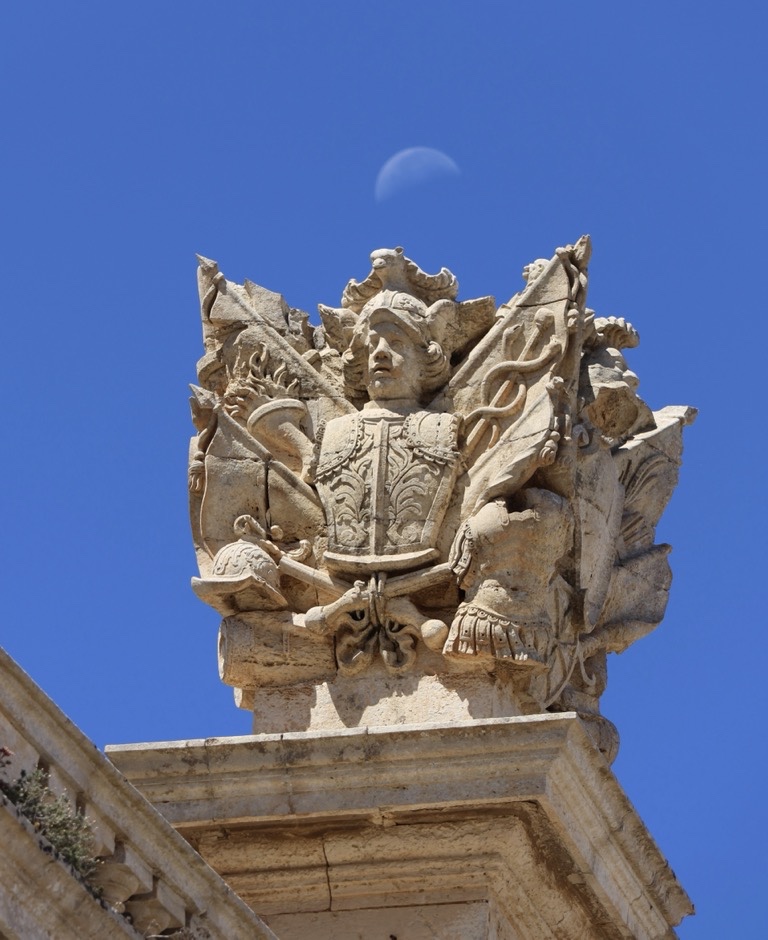
We went into the Carmelite Priory Church.
Our guide sang Ave Maria as a surprise, we missed the first few words starting up the recording.
At an overview point, we got a good look to the southeast. You can see Sliema, Valletta and the villages to the north of them.
Our tour leader wanted us to have a quick snack and to try one of the local foods, Pastizzi.
After the snack, we headed into Rabat.
The grotto where St. Paul stayed on Malta for three months.
Then we went into the WW II bomb shelters that were carved into the soft limestone below. The small rooms were numbered, I saw numbers as high as 35.
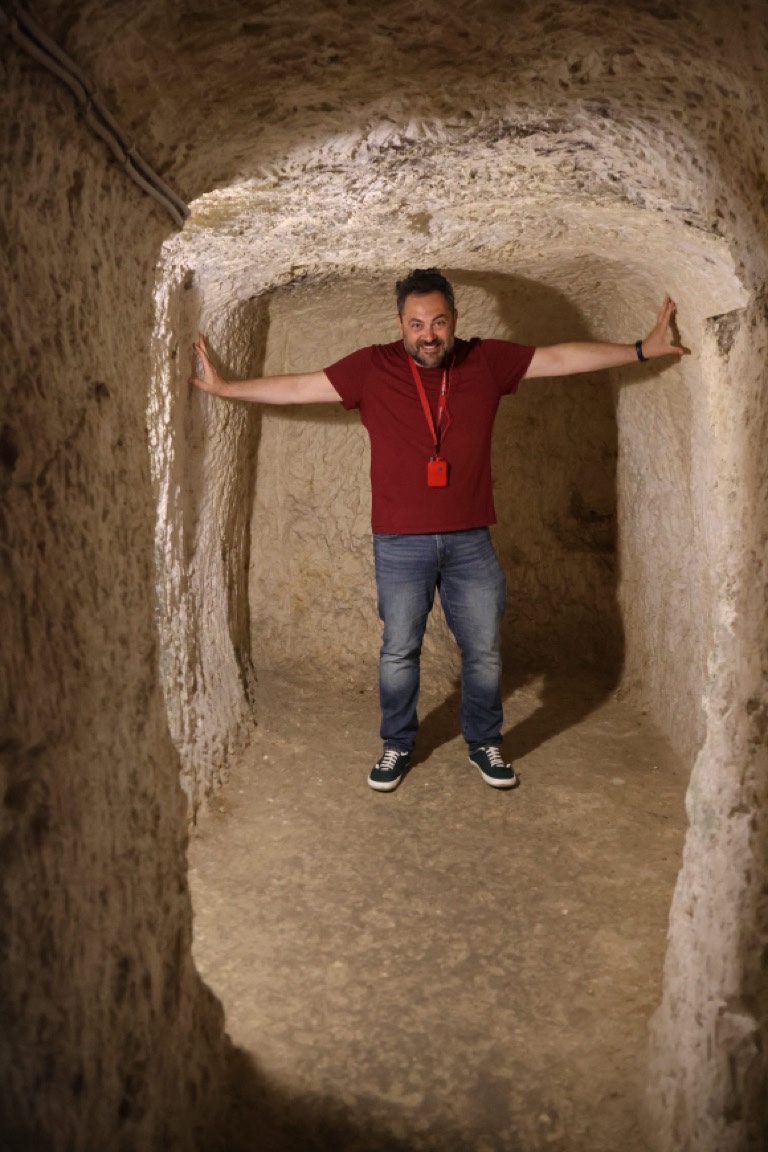
After that we went down into the catacombs, and saw the agape table there.
Desert at lunch was Mqaret, something like a deep-fried fig newton cookie. You spread the amaretto liqueur on it when you eat it.
After lunch, we went back to the museum at St. Paul to look at the exhibits for a bit.
